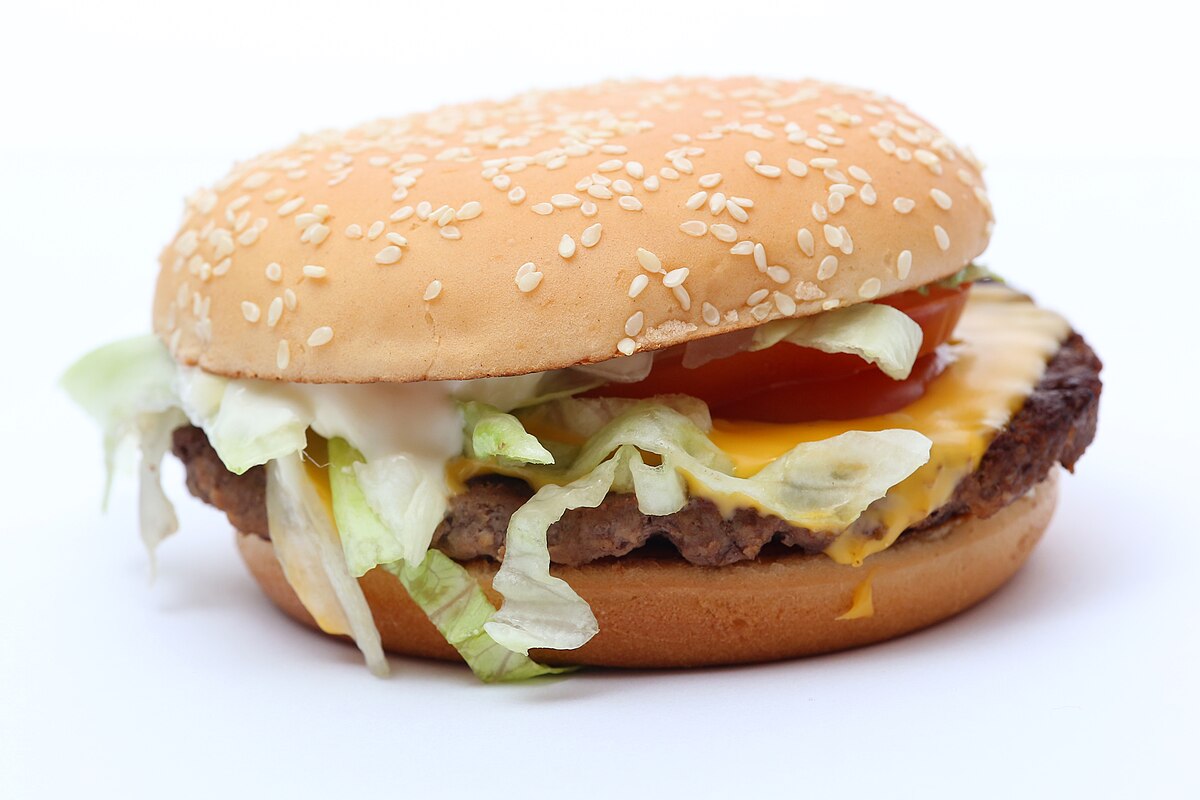 illustration from Wikipedia
illustration from Wikipedia
The Ultimate Guide to Food: From Nutrition to Culinary Delights
Food isn't just what keeps us going; it's a huge part of our culture, health, and how happy we are. This guide dives into the awesome world of food, from what it does for your body to how it becomes amazing meals. Whether you're a pro chef, trying to eat healthier, or just love a good bite, you'll find some cool stuff here about food.
Understanding Nutrition: What Food is Made Of
Basically, food gives us what we need to live, grow, and feel good. These are split into two groups: macronutrients and micronutrients.
Macronutrients: Your Energy Sources
We need lots of these for energy. Here are the big three:
- Carbohydrates: Your body's main fuel. Think grains, fruits, veggies, and beans.
- Proteins: Build and fix stuff in your body, like muscles. Find them in meat, eggs, dairy, and nuts.
- Fats: A super strong energy source, plus they help with hormones and soaking up vitamins. Good fats are in avocados, nuts, and olive oil.
Micronutrients: The Little Helpers
We only need a bit of these, like vitamins and minerals. They don't give energy, but they're super important.
- Vitamins: Keep your body running smoothly, help your immune system, and protect your cells.
- Minerals: Key for strong bones, nerves, and keeping the right amount of fluid in you.
Why You Need a Balanced Diet
Eating a mix of foods is key to staying healthy. Make sure you get the right amount of everything. Key things to remember:
- Variety: Eat lots of different foods to get all sorts of nutrients.
- Moderation: Don't eat too much of anything to stay at a good weight.
- Balance: Get a good mix of carbs, protein, and fat.
Check out guidelines like MyPlate from the USDA to help you plan your meals. They tell you to eat lots of fruits, veggies, whole grains, lean proteins, and low-fat dairy.
Exploring Different Types of Food
There's an amazing amount of food out there, with different flavors and ways to cook. Let's look at some main types:
Fruits and Vegetables
These are packed with vitamins, minerals, fiber, and antioxidants. They're great for your health and can help keep you from getting sick.
- Fruits: Sweet and yummy, a great energy source. Think apples, bananas, and berries.
- Vegetables: Lots of colors and types, full of nutrients and fiber. Like leafy greens and root veggies.
Grains
A staple food in many places. They give you carbs, fiber, and important vitamins.
- Whole Grains: Have everything still in them, so more fiber and nutrients. Brown rice and quinoa are good examples.
- Refined Grains: Have had parts removed, so less fiber and nutrients. Like white rice and white bread.
Proteins
Super important for building and repairing your body.
- Animal Proteins: In meat, eggs, and dairy. They have all the right building blocks (amino acids).
- Plant Proteins: In beans, lentils, and nuts. You might need to mix them to get all the right amino acids.
Dairy
Good for calcium, vitamin D, and protein. But some people can't have it.
- Milk: Comes in different fat levels, a good drink.
- Cheese: Lots of flavors and textures.
- Yogurt: Good for your gut with healthy bacteria.
The Culinary Arts: Making Food Awesome
Food is also about enjoying and being creative. Cooking is an art that turns ingredients into tasty and pretty dishes.
Cooking Techniques
Different ways to cook change how food tastes. Some common ones are:
- Baking: In the oven with dry heat.
- Frying: In hot oil.
- Grilling: Over a flame.
- Boiling: In water.
- Steaming: Using steam.
- Sautéing: Quickly in a little fat.
Global Cuisines
Every country has its own amazing food. Trying different cuisines is a fun adventure.
- Italian: Pasta and pizza!
- French: Fancy techniques and rich flavors.
- Chinese: Stir-fries and dumplings.
- Indian: Aromatic spices and curries.
- Mexican: Bold flavors and chilies.
Food and Culture: A Tight Connection
Food is linked to our culture and history. Traditions are passed down and shape how we eat.
Food Traditions and Rituals
Many cultures have special food for holidays and celebrations.
- Thanksgiving: Turkey and pumpkin pie!
- Christmas: Cookies and roasts.
- Lunar New Year: Foods for good luck.
Food and Identity
Food shows who we are. What we eat shows our background and beliefs.
Navigating Food Choices: Smart Decisions
It's hard to pick what to eat with so much around. Here's how to make good choices:
Reading Food Labels
Know how to read these to know what's in your food.
- Serving Size: Pay attention!
- Calories: How much energy you're getting.
- Macronutrients: Carbs, protein, fat.
- Micronutrients: Vitamins and minerals.
- Ingredients: Watch out for unhealthy stuff.
Choosing Whole Foods
Pick foods that aren't processed.
- Fruits and Vegetables: Fresh is best.
- Whole Grains: Brown rice over white.
- Lean Proteins: Chicken and fish.
- Healthy Fats: Avocados and nuts.
Mindful Eating
Pay attention while you eat.
- Eat Slowly: Enjoy each bite.
- No Distractions: Turn off your phone.
- Listen to Your Body: Stop when you're full.
The Future of Food
Food is always changing.
Plant-Based Foods
More people are eating less meat and dairy.
Sustainable Food Production
Trying to grow food without hurting the planet.
Personalized Nutrition
Eating what's best for your body based on your genes.
Conclusion: Enjoy Food!
Food is a big part of our lives. Eat well, try new things, and enjoy!
Learn More About Healthy Eating!Published on March 4, 2025
reference: USDA MyPlate guidelines, World Health Organization
Gema
Wordsmith and content writer passionate about creating high-quality content that informs, entertains, and inspires. Let me bring your brand's story to life.
All stories by : Gema

0 Comments